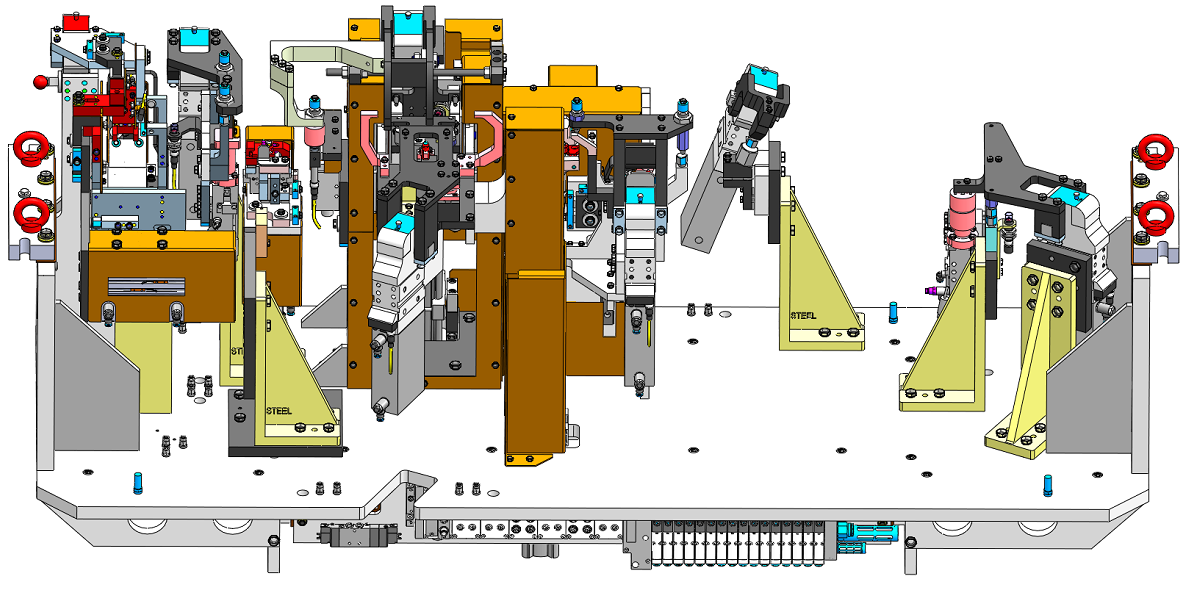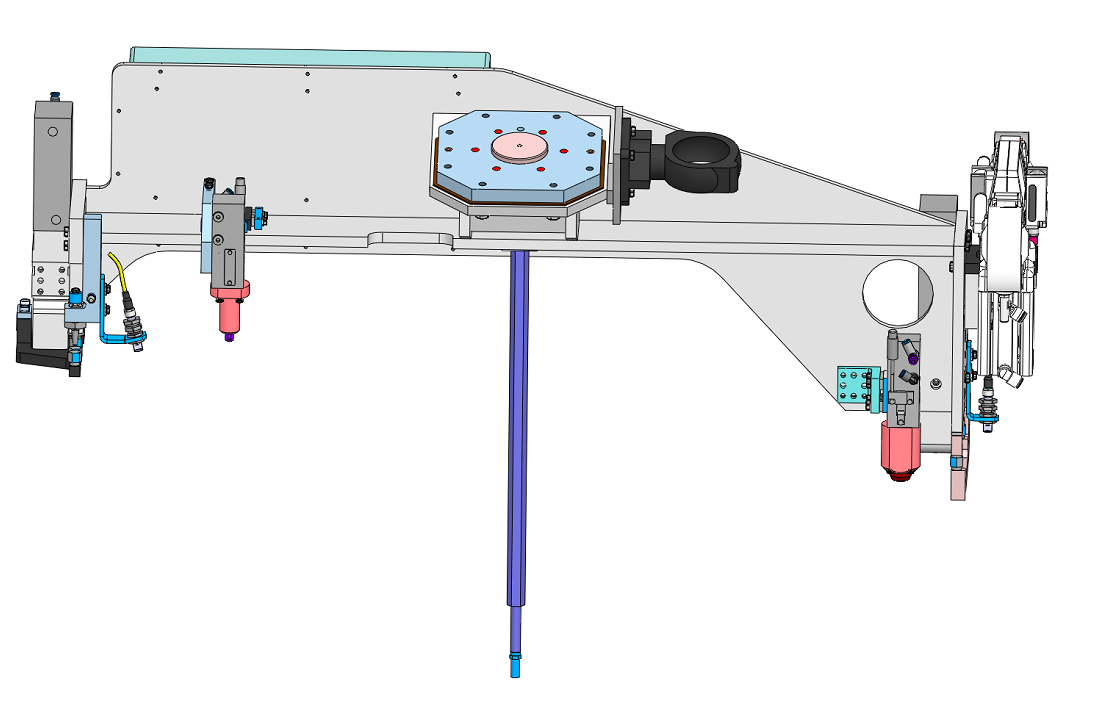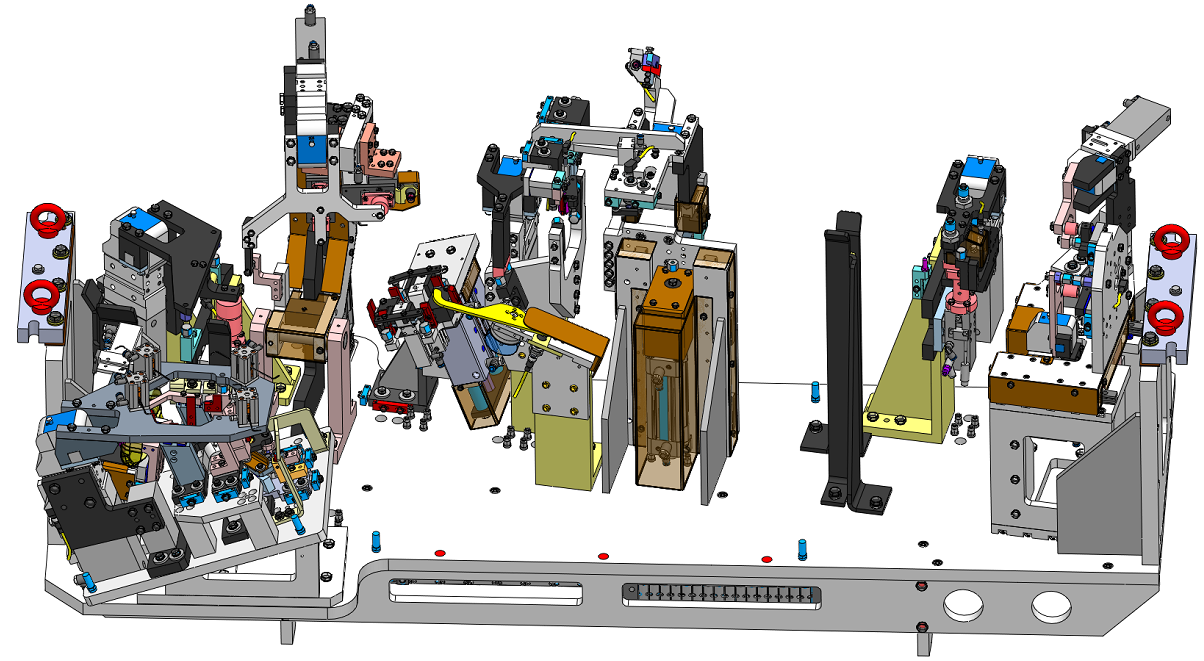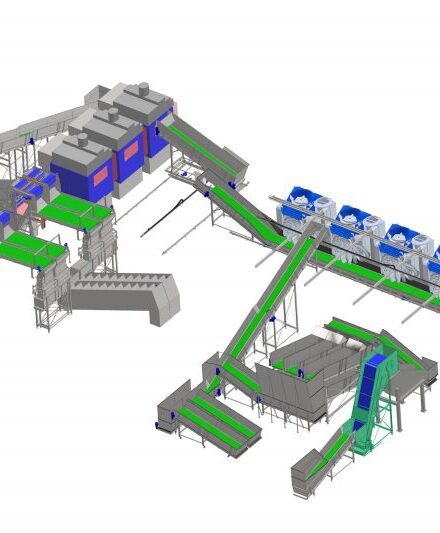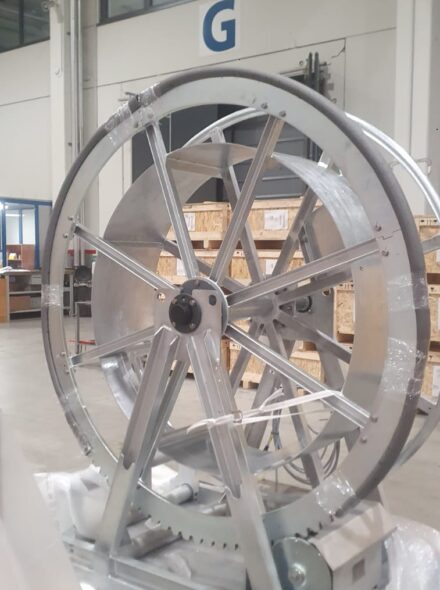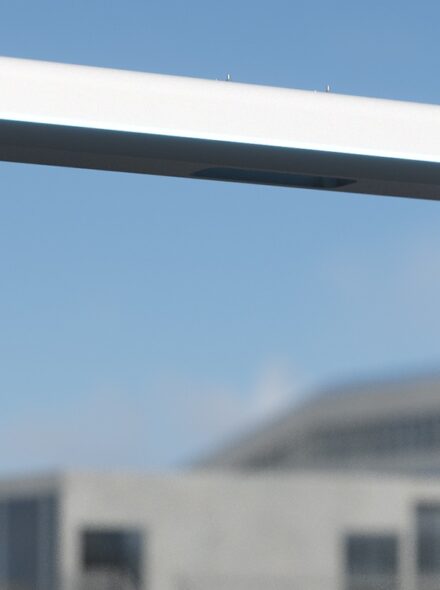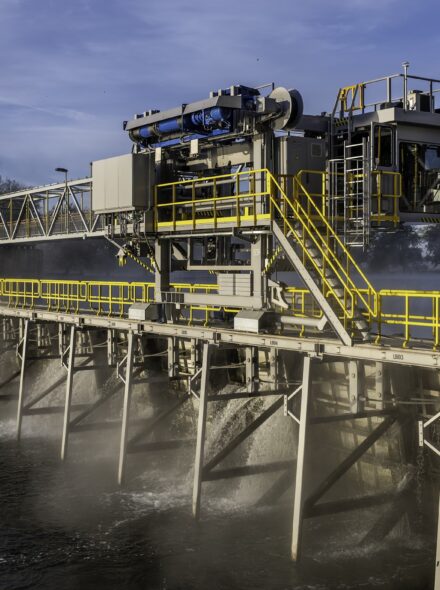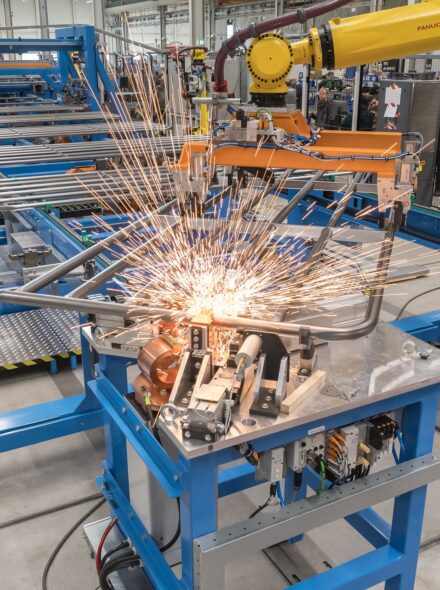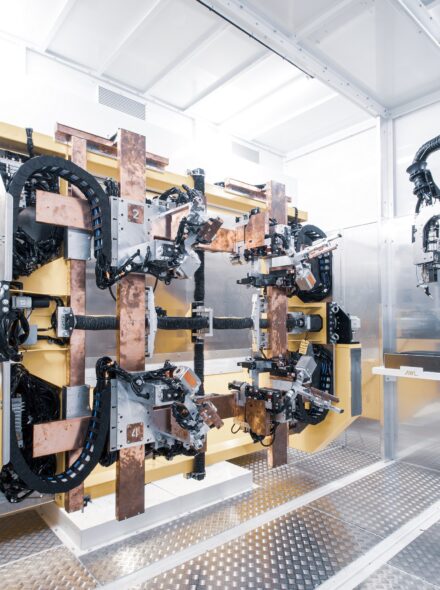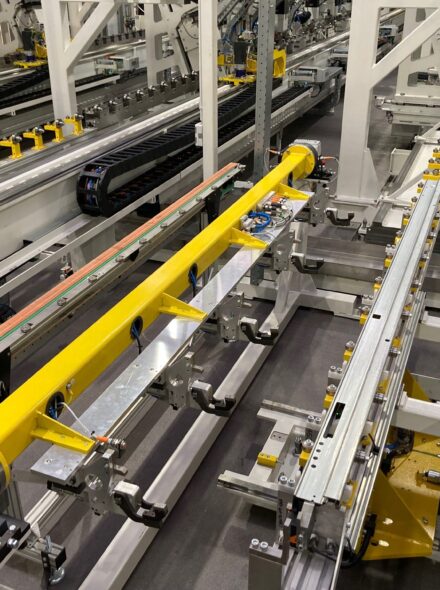Welding jig for a longitudinal beam of a car
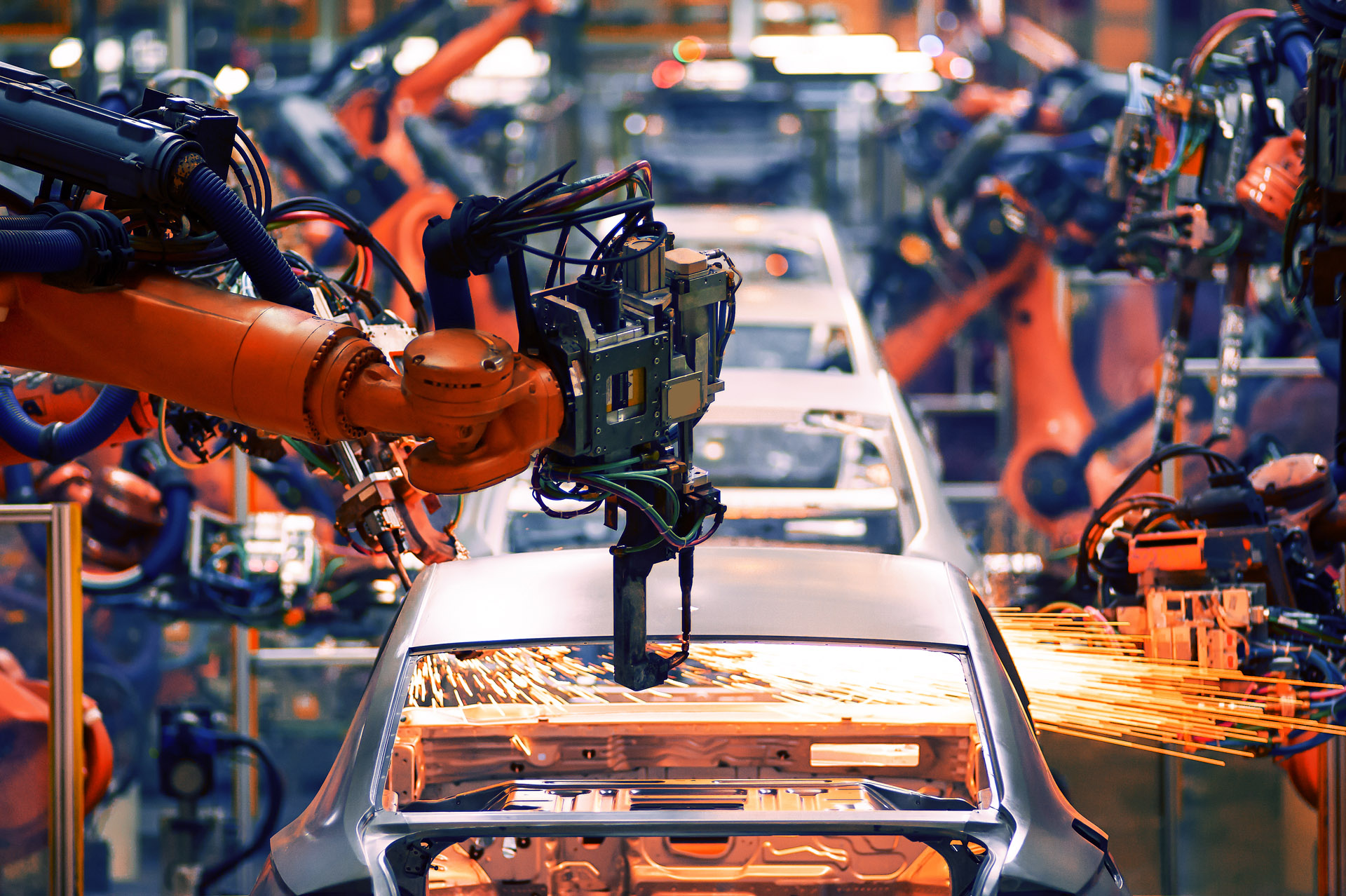
About this project
Body in white (BIW) is the stage in car manufacturing in which the frame of a car body is assembled. That is, before painting and before the engine, chassis parts or trim (glass, door locks/handles, seats, trim, electronics, etc.) are integrated into the structure. Assembling a “body in white” involves various techniques such as welding (spot, MIG/MAG), riveting, clinching, gluing and laser soldering. The term is derived from manufacturing practices before steel unibody monocoques – when auto bodies were made by outside companies on a separate chassis with an engine, suspension and bumpers attached. The manufacturers built or bought wooden bodies (with thin, non-metal construction plates on the outside) to screw to the frame. The bodies were painted white prior to final color.
In the “body in white” project below, we have designed a machine that produces the longitudinal member of various SUV models by means of spot welding.
Our design share consists of two welding jigs and a gripper which can automatically remove the part from the welding jig. The challenge was that we had to weld two can parts that were placed on top of each other. An extra welding step has been added to the process, where the second can is lifted up. This can be clearly seen in the video below where the machine is welding “dry” (without product).
project insights
